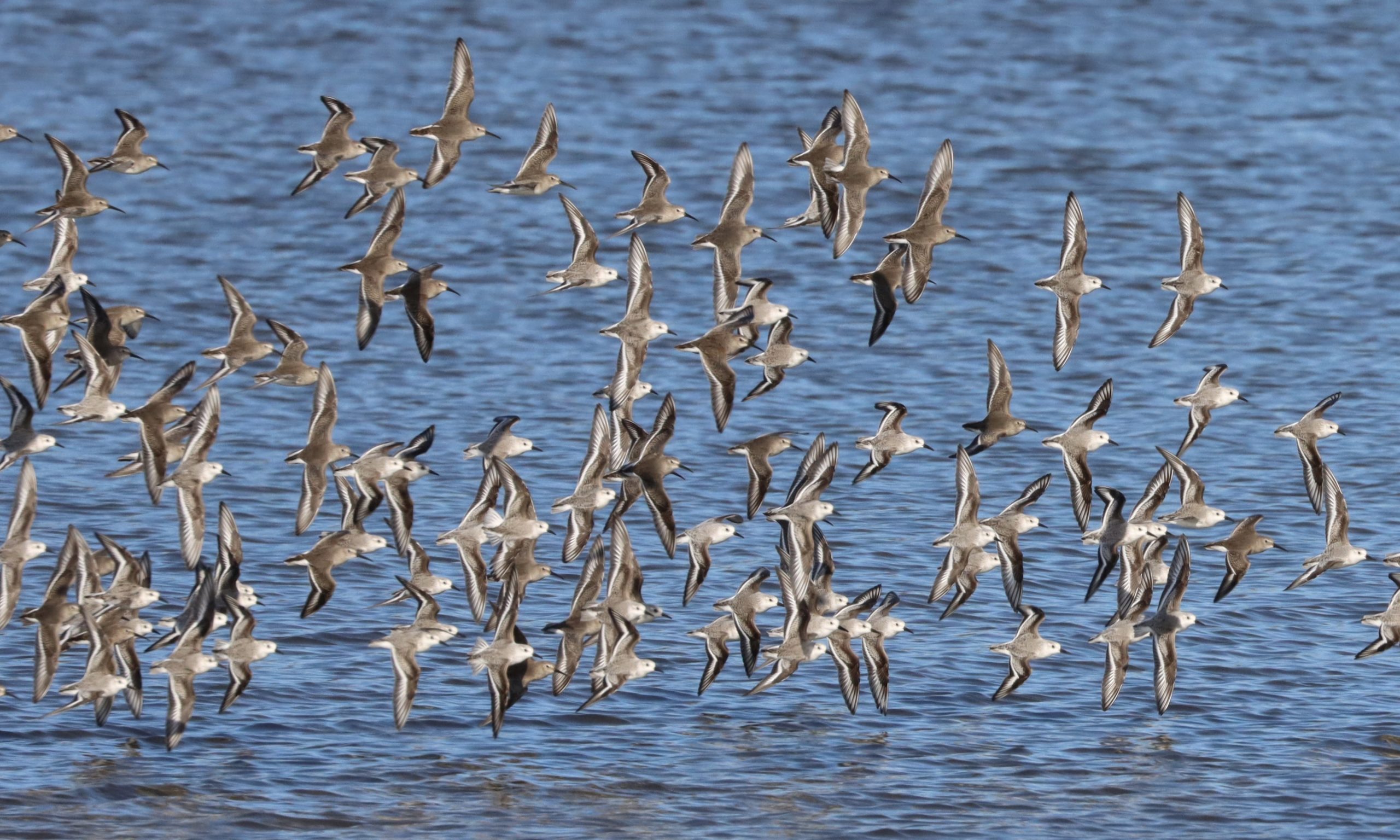After nine years of tagging migratory Dunlin, researchers have identified key shorebird habitat along the East Asian-Australasian flyway.
Every summer along the northern coast of Alaska, the distinctive songs of Dunlin carry across the tundra. The same repeated raspy notes and high-pitched descending trill can be heard in eastern Russia near the Bering Sea and the Sea of Okhotsk, northwest of Canada’s Hudson Bay, along parts of northern Europe and Siberia, and throughout other arctic and subarctic regions.
“It’s this repetitive, crazy rattling and screaming breeding display,” says Benjamin Lagassé, a PhD student at University of Alaska Fairbanks who is studying Dunlin. “If you work in a tundra area, even if you’re not into birds, you can’t help but recognize it.”
There are ten subspecies—smaller taxonomic groups within a species—of Dunlin, a robin-sized shorebird whose breeding plumage includes a bright red-brown back and black belly, and each of these subspecies breeds in a different area.
Once they leave their breeding grounds, however, they’re difficult to tell apart. This means that while Dunlin are frequently observed by amateur and professional birders alike throughout the year, little is known about which subspecies go where. To fill this knowledge gap, Lagassé and his colleagues set out to identify the migration routes and wintering grounds of Dunlin subspecies along the East Asian-Australasian flyway.
Unraveling a migration mystery
In a paper published in PLOS One this August, Lagassé’s team of researchers identified potentially key areas for four different Dunlin subspecies and track when they use those locations. This work will make it easier to understand the threats Dunlin face and why certain subpopulations experience more or less decline than others.
“Being able to distinguish all these different subspecies is so important because they have different population trends,” says Stephen Brown, Manomet’s vice president of science and a co-author on the study. “This study is a huge leap forward because it identifies all sorts of important places and which subset of sites we need to worry about if we are trying to protect a particular group of birds.”

According to a previous demographic study, the Dunlin subspecies arcticola, which breeds in northern Alaska, is declining rapidly, Brown says. Many shorebirds in the East Asian-Australasian Flyway are threatened by habitat loss as wetlands are filled in for human use and face additional pressures including hunting and climate change. But to figure out exactly why arcticola has such a high mortality rate compared to other Dunlin, scientists and conservation managers need specifics.
Building momentum
Over nine years, Lagassé’s team trapped and tagged 339 Dunlin at eight different breeding sites. Each bird received a small leg tag with a light-sensing geolocator, which logged the maximum light level every five minutes. The researchers recaptured 107 birds at their breeding sites a year later to retrieve the tags. By analyzing the data from those tags and comparing it to sunrise and sunset times in different places, they learned where the birds from each subspecies were traveling. They found that after arcticola left northern Alaska, the birds split between two different wintering sites.
“They’re all together on the breeding grounds, but then some go to Japan to winter and some go to areas of mainland East Asia and there doesn’t seem to be much exchange,” Lagassé says. “So if we think habitat loss is what’s driving low adult survival rates, is it habitat loss in the Yellow Sea? Or is it conditions in Japan? Or a combination of both?”
The researchers also found areas that seemed important for multiple subspecies of Dunlin, with birds arriving at slightly different times. By combining this information with 57 years of Dunlin band-sighting data, compiled in a study published by Lagassé and his colleagues in 2020, scientists are beginning to form a picture of what sites are vital for each subspecies and when.
“The next step is relaying what we’re learning, in this paper and others, to people on the ground doing conservation,” says Rick Lanctot, shorebird coordinator for the Alaska region of the U.S. Fish and Wildlife Service and a co-author on the study. “We need to take all this information about where birds go and the areas they need at particular times of year and use it to inform decisions about which areas are the most critical to try to protect.”





 Back to all
Back to all


